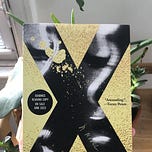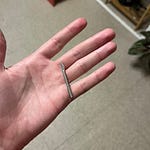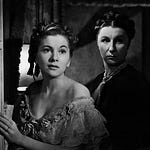
About four years ago, a boy dyke friend and I spent a lot of time complaining about something we called the Top Box.
A phenomenon among the dykes and queer women of our Bay Area milieu, the Top Box was where other queers—cis and gender-conforming ones, specifically—put their trans or gender-nonconforming lovers. Were you read as trans, androgynous, butch, or masculine? Then it was often taken for granted (including by others like you) that you would top your partner in sexual and romantic situations, literally as well as figuratively. Being stuck in the Top Box was what happened with the almost seamless conflation of trans genders; of being the giving, active, or penetrating partner; and a suite of unsympathetic and reductionist understandings of queer masculinity (which often included by default queers of color, trans women and femmes, and others masculinized by non-normativity).
My friend and I complained about the Top Box (and its corollary, the Fake Top) a LOT. Both of us verging on our respective medical transitions, it was only after years of being gay that we were beginning to articulate what it felt like to be fetishized by our own people while having that fetishization be either dismissed or used against us as evidence of the “privilege” that comes from being “masculine,” highly visible, and/or sexually aggressive. But what began as a bit of boyfriendly flip became a really useful term to express the alienating, frustrating, and conflicting experience of being seen as man-lite, not a real woman, not a real lesbian, too queer, inherently violent or dangerous, a sentient dildo. Why couldn’t we simply enjoy being appreciated for the qualities that made us unwanted in the straight world? Perhaps because this newfound desirability came with the threat (sometimes made explicitly) that it would be used against us at the first sign of difficulty or vulnerability.
My friend and I joked that we could write a whole book about the Top Box. Maybe someday we would get bunch of trans people to anthologize about their gendered, racialized, classed, and embodied experiences with it. But the joke took on a life of its own. Having just published the earthquake room, I had begun thinking about what I wanted from a second novel. As I took more control—and more responsibility for—my body and my desires, I realized that it wasn’t just people like us that had a complicated relationship to the metaphor of sexual positionality. All of us did. So I began writing a book about what happens to a top who decides they don’t want to be a top anymore.
X grew to be more than that, of course; both of my novels began as lines of inquiry, and neither has revealed more than it has prompted. As well as a meditation on desire and power, X is also my opportunity to experiment with noir—perhaps my most beloved genre—to document butchness, to provide a postmortem of two abusive relationships, and to eulogize that most ineffable of lifeforms, the femdom nightmare.
Maybe we still will write the Top Box book. But until then, there’s X. Tell your friends, etc. See on bookshelves in June 2022!
David tweets at @k8bushofficial. Their second novel, X, is now available for preorder from Catapult.
Subscribe to support GOOD ADVICE/BAD GAY, an advice series from an anonymous gay therapist who’s not afraid to hurt your feelings with the truth. (Sample an unlocked post for a taste of what you’re missing.) 100% of funds go to support a rotating selection of mutual aid and reparations projects.
Want advice? Email badgayadvice@gmail.com for a free 3-month subscription.











